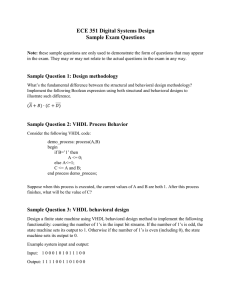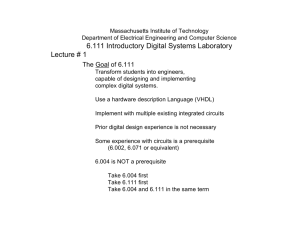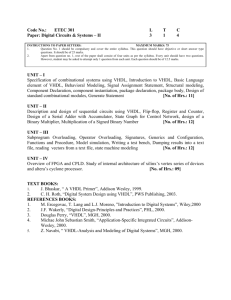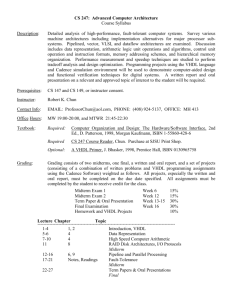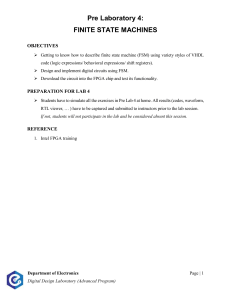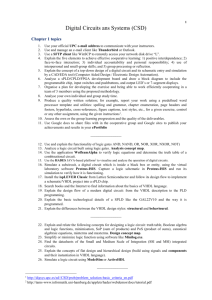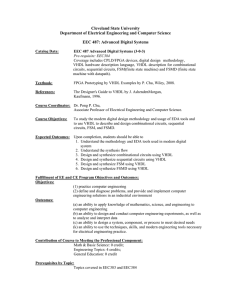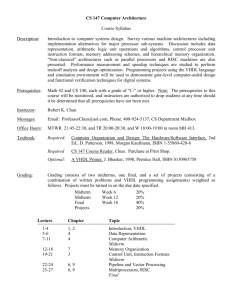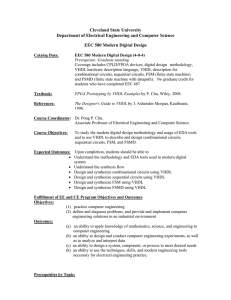exp9_lecture_wp_withoutfinal
advertisement
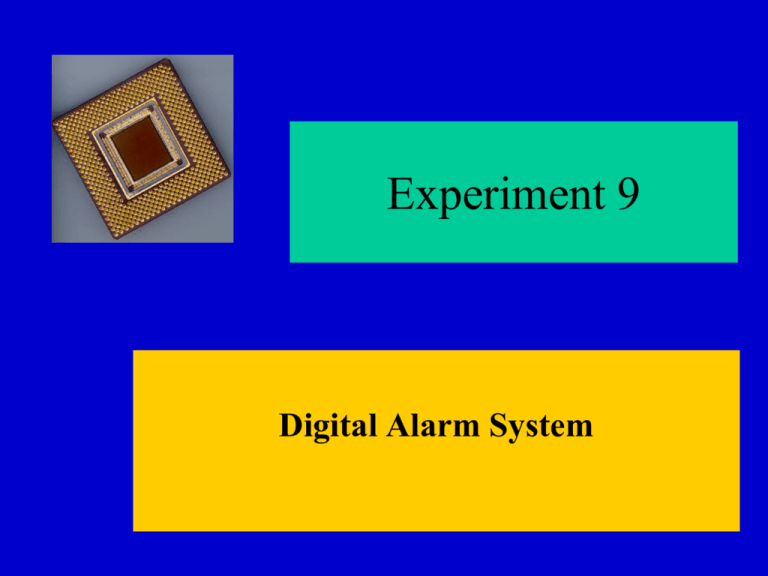
Experiment 9 Digital Alarm System Experiment 8: Random Notes • Timing diagrams need to be annotated – it’s not the reader’s job to figure out what is going on or what is important • Don’t forget circuit diagrams – circuits you designed/experimented with – answers to questions • Take more space: use blank lines in code and in experiment write-up Instructional Objectives: • Using VHDL behavioral modeling in the design of a Finite State Machine (FSM) • To combine previously designed VHDL modules into a complete digital alarm system using structural modeling Finite State Machine •A Finite State Machine (FSM) is a digital circuit whose state changes based on both the current state (of the FSM) and the current inputs •The outputs of a FSM are functions of the current state (Moore Model) --or-- functions current state and current inputs (Mealy Model) •Synchronous FSMs change their state with respect to a clock input and maintain their state (store their state) in flip-flops FSM Models Standard Architecture VHDL Behavioral Model VHDL Behavioral Models for FSM VHDL Dependent PS/NS Architecture: Y’s External Control (CLR, En, PRE) • State Memory • Clock Edge Synchronization • Ext. Controls (clr, en, preset) •Next State Sequencing •Output Decoder Z’s X’s Dependent PS / NS Coding Style: (2 Processes) – Synchronous Process • Clocking / Control (clears, enables, presets) – Combinatorial Process • Next State Sequencing • Output Decoding Logic Ref: Low-Carb VHDL Tutorial CPE 169 Experiment 9 Experiment 9 Overview P1: Finite State Machine Design 1. Using Your State Transition Diagram & PS/NS Table 2. Using the “Dependent PS/NS” VHDL Architecture 3. Simulate to Verify (Test Cases?) P2: Digital Alarm System – – – Integrate earlier modules into a working system Verify the complete system (instructor signoff) Detailed schematic!!
